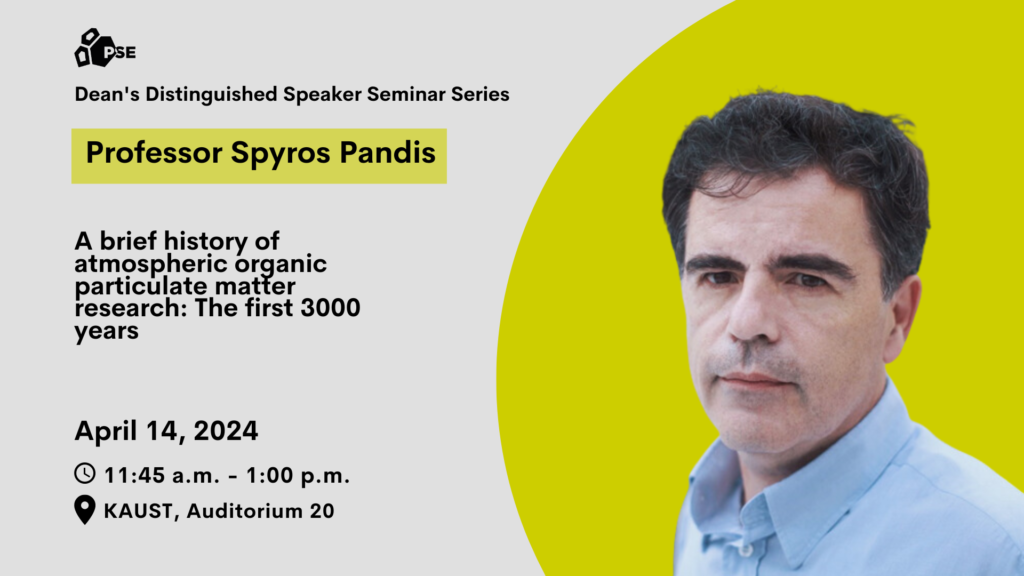
A brief history of atmospheric organic particulate matter research: The first 3000 years
By Spyros Pandis, Professor in the Chemical Engineering Department, University of Patras, Greece, and Co-director of the Center for Air Quality and Climate Change in the Foundation for Research and Technology, Hellas (FORTH)
April 14, 2024
11:45 a.m.
KAUST, Auditorium Building 20
Abstract
Atmospheric chemistry occurs within a fabric of complicated atmospheric dynamics and physics. This interplay often results in nonlinear and often counterintuitive changes in the system when anthropogenic emissions change. Atmospheric particulate matter is one of the most fascinating components of this system. Atmospheric particles can cause health problems and visibility reduction, and they can contribute to acidic deposition and material damage; however, they are also a major player in the energy balance of the planet. A major goal of our research has been to gain a predictive understanding of the physical and chemical processes that govern the dynamics, size and chemical composition of atmospheric aerosols. This talk focuses on the formation and evolution of organic aerosols (OA), probably the most uncertain component of atmospheric particulate matter.
The chemical complexity of OA (hundreds or thousands of compounds) poses a formidable scientific challenge. Until recently, organic particulate material was simply classified as either primary or secondary, with the primary component being treated in models as nonvolatile and inert. However, this oversimplified view fails to explain the highly oxygenated nature of ambient OA, the relatively small OA concentration gradients between urban areas and their surroundings, and the concentrations of OA during periods of high photochemical activity. A unifying framework for the description of all components based on their volatility distribution (the volatility basis set) can be used for the treatment of a wide range of processes affecting organic aerosol loadings and composition in the atmosphere.
